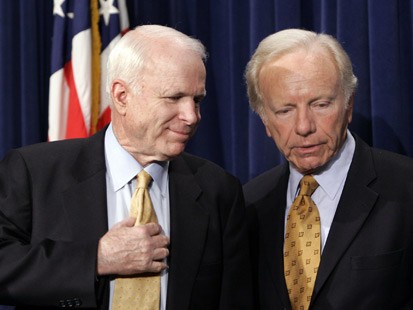Quadrillage By Any Other Name . . .
Pat Lang observes that after Vietnam the Army decided to “forget” its hard-learned lessons about fighting insurgencies but “apparently did not succeed in eradicating the possibility of insurgency as a method of warfare.”
He sees in the “new” tactics being employed in Baghdad pursuant to the “new” doctrines outlined in the latest COIN manual something strangely similar to what the French termed “Quadrillage” half a century ago.
The good news? It might actually work. The bad news? It could be bloody. And tried three years ago.






Yes, lets look at the success record french colonialism…have you lost your mind!
Remember in 2003 when the Pentagon screened Pontecorvo’s “Battle of Algiers” for top special-ops officials and other strategists?
The same argument about using the quadrillage was made then. Of course, the showing was curious given the fact that Pontecorvo’s main theme is the savagery of the invading French army and the futility of fundamentally defeating an insurgency.
The Pentagon folks learned something from the film, though. It was just a matter of months before US forces started using the same torture techniques depicted in the film at places like Abu Graihb.
One wonders why they didn’t quite get the fact that French model of torture and occupation didn’t
work out all that well.
Quadrillage tactic can be used successfully in some situation and fail in others. If a country is in general unrest then it has little chance of succeeding. If it just a small % which it appears in Iraq then if has a good chance of helping. It won’t solve the problem by itself but can part of solution.
The article saying “the United States abandoned the idea of participating in further counter-insurgency campaigns†and military dismissing insurgency and counter-insurgency operations is totally false. Our SOF forces are design primary for that purpose. We have participated in such operations to including Columbia which we are still helping out with today.
I guess such statements by the author sounds good but lack in reality. The US is generally pretty good in such operations. The biggest problem that arises is when the press gets involve and harps on all the negatives then you get bleeding harp liberals that want to cut and run at the first US death. Not that I have supported every operation that we have done but many of the operations have been beneficial to the US.
SOF may be trained for COIN, but the conventional combat arms branches were dragged kicking and screaming into doing it until now. How big is SOF compared to the rest of the Army and Marines?
SOF is small compare to the total of the rest of the military but so is about any single component. The numbers of combat pilots is small compare to the total of the rest of military also. However for someone to state that the military abandon air-combat campaigns would be foolish just as saying the military abandon counter-insurgency campaigns.
It cost more to train a SF personnel then it does to train a pilot. The SF personnel can then be integrated into a conventional unit to help with CI missions. There was much more to CI training then just finding and killing the bad guys.
I’m not aware of any conventional combat branch ever throwing a fit about CI training, although they have plenty on their plates already. As I recall, there were many exercises of conventional forces taking on guerilla size units and tactics for at least the last 20 years. Of course we had plenty of exercises on facing enemy of like or larger size units as well using conventional tactics.